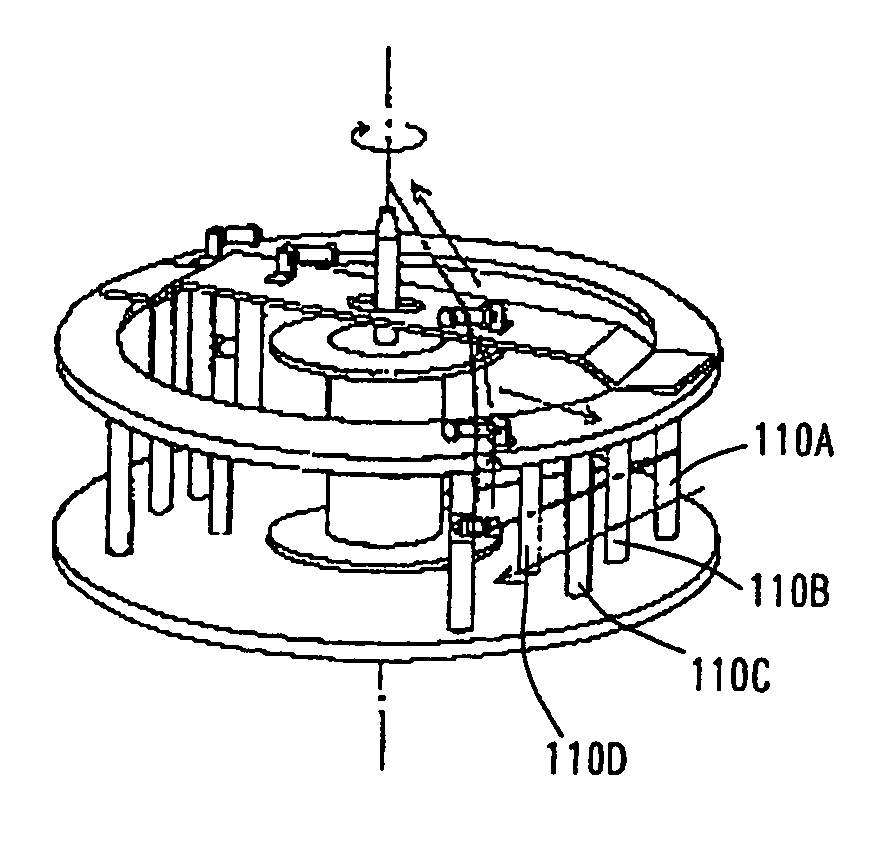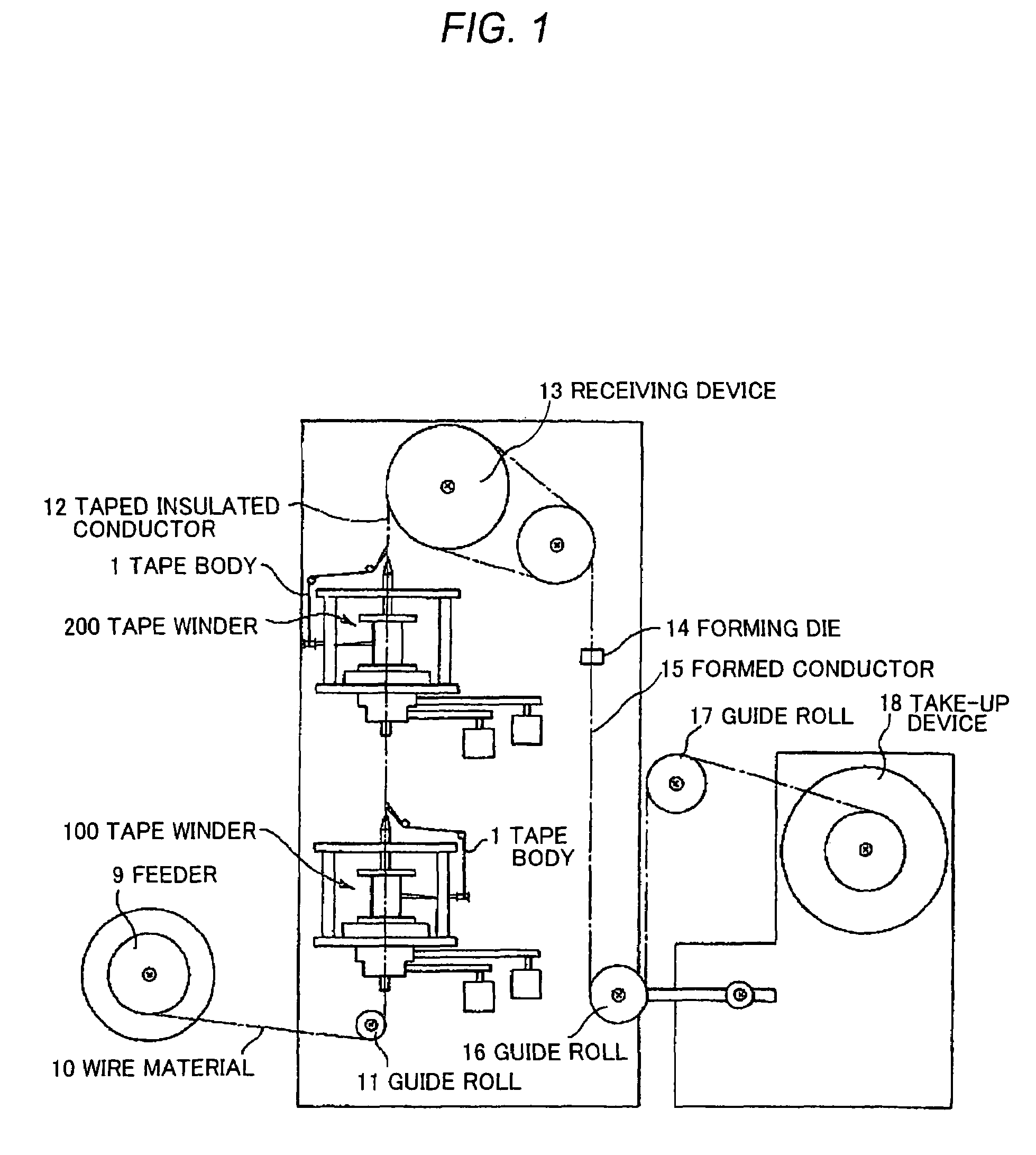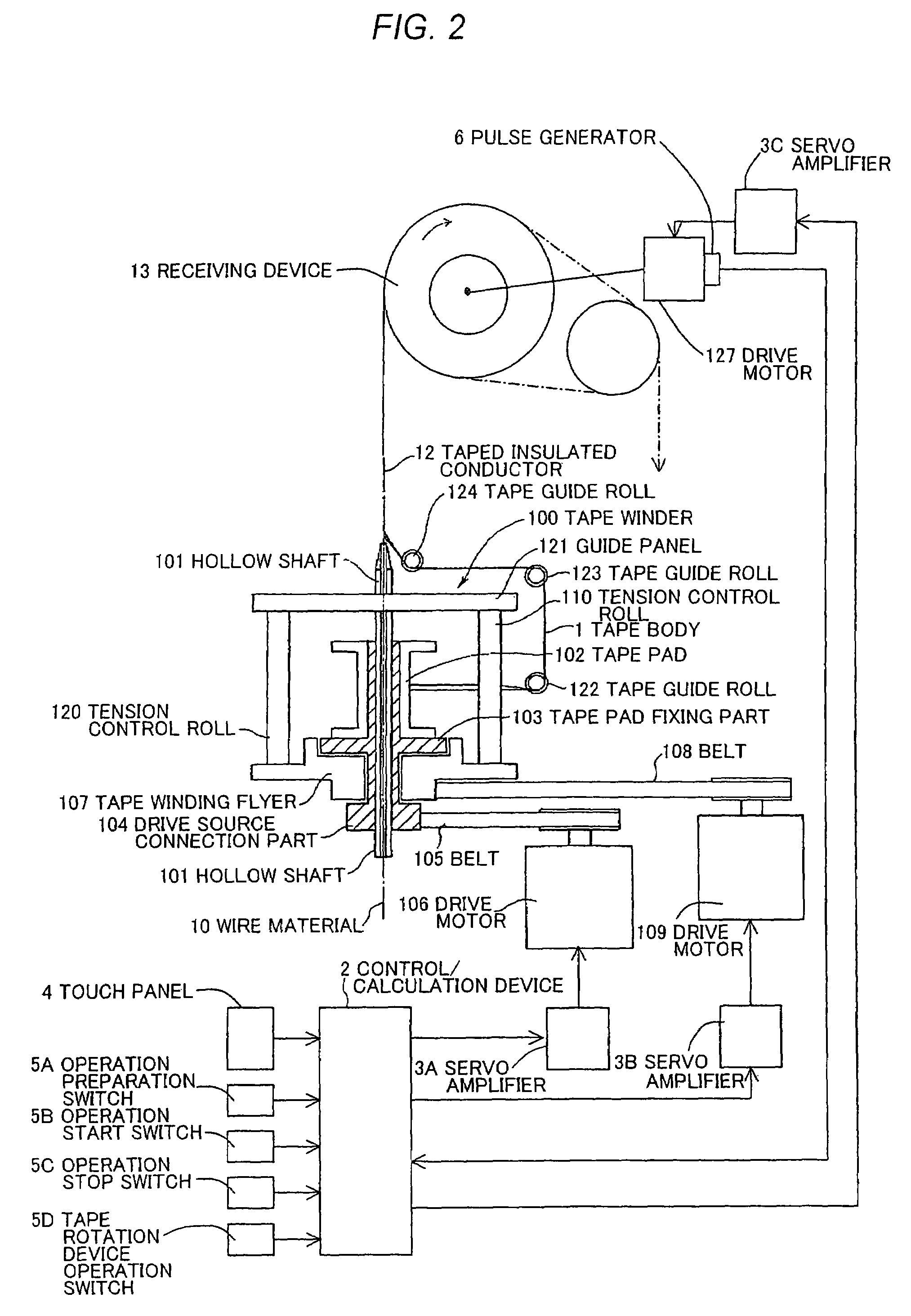Apparatus for manufacturing taped insulated conductor and method of controlling tape winding tension
a technology of insulated conductors and manufacturing methods, which is applied in the direction of yarn, textiles and papermaking, thin material processing, etc., can solve the problems of large outside diameter, large porosity, and large dispersion of relative permittivity of insulator layers, so as to reduce the influence of winding winding force, reduce the effect of minimum tension and constant manufacturing speed
- Summary
- Abstract
- Description
- Claims
- Application Information
AI Technical Summary
Benefits of technology
Problems solved by technology
Method used
Image
Examples
example
[0069]FIG. 6 is a graph showing a relationship among the length (tape length) of the tape body 1, the output torque constant value, and the tape delivery tension. The output torque constant value of 100.00 and the data on the length of the tape body 1 of 900 m which correspond to the gradually decreasing value zero tension are inputted as the initial torque setting for the drive motor 106 by using the touch panel 4. In addition, the value of the number of rotations of 1500 rpm of the tape winding flyer 107 is inputted as the setting for the value of the number of rotations of the drive motor 109, and a value of 10000 m is inputted as a value of the length of the tape body received in the receiving device 13. In addition thereto, the product winding pitch set value of 6.6 mm is also inputted. In addition, a value of 200 m, and 60.00 are inputted as the value of the length of the tape body 1 used in the section in the first stage, and the end point torque value in the first stage of t...
PUM
| Property | Measurement | Unit |
|---|---|---|
| porosity | aaaaa | aaaaa |
| relative permittivity | aaaaa | aaaaa |
| impedance | aaaaa | aaaaa |
Abstract
Description
Claims
Application Information
 Login to View More
Login to View More - R&D
- Intellectual Property
- Life Sciences
- Materials
- Tech Scout
- Unparalleled Data Quality
- Higher Quality Content
- 60% Fewer Hallucinations
Browse by: Latest US Patents, China's latest patents, Technical Efficacy Thesaurus, Application Domain, Technology Topic, Popular Technical Reports.
© 2025 PatSnap. All rights reserved.Legal|Privacy policy|Modern Slavery Act Transparency Statement|Sitemap|About US| Contact US: help@patsnap.com



